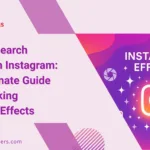A multi-location website redesign is essential for staying competitive online, but it also carries the risk of losing traffic if location pages lose relevance. For brands with dozens of locations, removing local signals can dramatically reduce rankings and visibility. In practice, centers with localized content on each location page have seen substantial gains one case showed a 107% rankings lift emphasizing why a careful, SEO-driven approach is critical during any redesign. This guide delivers a comprehensive, actionable framework to execute a multi-location website redesign without sacrificing traffic.
Why a multi-location website redesign matters
For multi-location brands, the traffic that fuels local conversions comes from signals tied to each location. When a site redesign blurs or removes those signals, search engines can struggle to connect a page with the right location intent. The outcome is often lower visibility, fewer location-specific inquiries, and missed opportunities in nearby markets. A properly planned multi-location website redesign keeps the local relevance intact while modernizing the user experience. This approach not only preserves traffic but can unlock new opportunities in underperforming locations.
To maximize resilience during a redesign, you should treat local pages as first-class citizens each location deserves optimized content, accurate business details, and a unique user journey. When done well, a multi-location website redesign can yield a 107% lift in rankings for location-targeted queries, along with improved click-through and conversion rates. That’s why prioritizing SEO from the start is critical for any multi-location strategy.
Pre-redesign technical SEO audit for a multi-location website redesign
Before you publish a new design, run a comprehensive pre-launch audit to preserve established rankings and minimize disruption. A rigorous assessment identifies risks and sets a solid SEO foundation for the multi-location strategy.
- Inventory and benchmarking: Document all business locations, Google Business Profile IDs, current URLs, organic rankings, and top-performing queries. This snapshot guides URL mapping and content decisions during the redesign.
- Identify issues: Use a site crawler to uncover duplicate or thin content, Core Web Vitals gaps, slow loading, mobile usability issues, and accessibility barriers.
- Technical crawl audit: Verify crawl budget, indexing status, updated sitemaps, and hreflang configurations for multinational sites.
- Structured data: Ensure LocalBusiness schema is present and NAP is consistent across pages. Validate canonical tags to prevent duplicates.
- Expand structured data: Consider adding Review, FAQ, and Service schema types for broader search coverage.
- Tracking: Implement UTM tagging, conversion tracking, and phone-call analytics to measure local and national SEO performance.
- Performance auditing: Use PageSpeed Insights to identify load-time bottlenecks and optimization opportunities.
Site architecture and URL strategy for a multi-location website redesign
A strong site architecture ensures both search engines and users can navigate the site easily, which is especially important for multi-location sites with many location pages. Common structures include subfolders, subdomains, multisite frameworks, or dedicated microsites. Subfolders generally deliver better centralized authority and scalability, especially when the main site maintains strong internal linking and content hub structures.
A critical rule: keep your existing URL structure if it already exists. If location pages live in subfolders today, preserve that structure in the redesign to prevent ranking disruptions. Consistency is the foundation of SEO value during a transition.
- Canonical URLs: Use canonical tags to prevent duplicate content from location clones or similar service pages.
- Sitemap strategy: XML sitemaps help crawlers discover content efficiently; HTML sitemaps can aid user navigation. A hybrid approach is common for large multi-location sites.
- URL templates: Favor static, clean URLs such as example.com/services/dentistry/location/ for better crawlability and usability.
Location page content considerations for a multi-location website redesign
Technical SEO matters, but content quality and relevance drive most local performance. Each location page should be uniquely tailored to its locale with clear targeting and user-centric information. Here are essential elements to include on every location page:
- Unique H1 with city intent and a primary keyword (for example, housekeeping services in [city]).
- NAP Full name, address, and phone number, consistent across all listings and directories.
- GBP link to the location’s Google Business Profile page.
- Local hours that are current and specific to the location.
- Local phone number consistent with NAP signals.
- Locally optimized services detailing offerings with location-specific keywords.
- Staff photos featuring local teams or members to build trust and community connection.
- Local testimonials with review-rich markup for aggregate ratings.
- Dedicated content block for location-specific details to minimize duplicate content.
As you craft each location page, ensure that content is unique and tailored to the locale so search engines can clearly identify intent and relevance. Avoid boilerplate blocks that blur location lines; instead, create a dedicated content section for each site that speaks directly to that market.
Design elements for a multi-location website redesign
Design choices must balance brand consistency with local identity. The right elements help locals feel connected while maintaining a cohesive overall brand experience.
- Location-specific imagery: Show storefronts for brick-and-mortar locations or service-area visuals for mobile-focused locations.
- Interactive maps or a location finder to help users locate the nearest facility or service point.
- Social media feeds on location pages to surface local promotions, events, and user-generated content.
- Team photos of local staff to humanize the brand and reinforce community ties.
- Consistent CTAs across locations with location-specific value propositions.
Complete multi-location redesign audit checklist
Before launching, run through a thorough checklist to preserve traffic and ensure a smooth rollout. This process helps you protect rankings and deliver a seamless user experience across all locations.
- Brand consistency: Align colors, typography, logos, and tone across all pages and location content.
- URL mapping: Verify all critical URLs map correctly to the new design and preserve SEO value.
- No URL structure changes: If you maintain a subfolder structure, ensure it remains intact to avoid broken links.
- Site performance: Confirm fast load times, Core Web Vitals pass, mobile responsiveness, and accessibility compliance.
- Clear CTAs: Place concise, above-the-fold CTAs on each page to drive engagement and conversions.
- Analytics and tracking: Implement Google Analytics, conversion goals, and UTM parameters for cross-location insights.
- Mobile optimization: Ensure responsive design works flawlessly across devices and screen sizes.
- SEO-friendly content: Optimize local keywords, meta descriptions, and header hierarchy for every location page.
- Structured data: Apply LocalBusiness, Service, and Review schemas on location pages to aid indexing.
- Internal linking: Build strong internal links to guide users through related services and locations.
- User testing and feedback: Gather stakeholder and user input to validate usability and business goals.
- Content uniqueness: Ensure each location page has distinct content to avoid duplication issues.
- Legal and compliance: Check accessibility, privacy, and regulatory compliance before go-live.
- Cross-browser compatibility: Test performance across major browsers for consistent experiences.
- Backup plan: Create a backup of the current site and have a contingency plan for post-launch issues.
The business case: results and why partners help with multi-location SEO
Redesigns for multi-location brands work best when guided by teams that understand local SEO, technical optimization, and conversion rate optimization. A leading agency example demonstrates the impact: by optimizing city-specific landing pages, aligning GBP updates, and matching high-intent keywords to target markets, a home services franchise with over 60 locations achieved scalable growth rather than simply maintaining rankings. The takeaway is clear: partnering with an experienced agency accelerates progress and ensures each location contributes to overall revenue and visibility.
Step-by-step SEO strategy to execute
This section outlines a practical, repeatable process you can apply to any multi-location redesign. It combines intent analysis, keyword strategy, and on-page optimization to sustain and grow rankings.
- Analyze search intent & keywords: Determine the primary search intent for your topics, select a clear primary target keyword (the focus keyword), and identify 3-4 supporting secondary keywords (LSIs) that reinforce related topics for the locations you serve. In this guide, the focus keyword is the multi-location website redesign, which anchors the content and headlines across pages.
- Craft core SEO elements:
- SEO title checklist: Create a title with the focus keyword at the start, include a power word, a sentiment word, and a number, and keep it under 65 characters.
- Meta description: Write a compelling meta description (150-160 characters) that includes the focus keyword and a strong CTA.
- Construct the article content (HTML format):
- Word count: Target 1500–2000 words for depth and breadth.
- Keyword in opening: The first paragraph must include the exact focus keyword, preferably in the first sentence.
- Keyword density: Maintain the focus keyword and its combinations at 0.8–1.2% throughout the article, weaving primary and secondary keywords into headings and body text.
- Structure & readability: Use clear H2 and H3 headings, keep paragraphs short (2–3 sentences), and use strong for emphasis. Include bullet lists where helpful.
- FAQ: End the article with a Frequently Asked Questions section and then a conclusion.
- FAQ & conclusion: Prepare 3–4 relevant questions and answers, then finish with a strong conclusion that reinforces the main value proposition and a CTA to engage with an expert partner.
Frequently Asked Questions
What is the most important factor when designing a multi-location website?
Maintaining strong local signals on each location page, including accurate NAP, localized content, and robust internal linking, is critical to preserving traffic during a redesign.
Should I keep my existing URL structure during a multi-location redesign?
Yes. If your current site uses a subfolder structure for locations, preserve it to avoid ranking disruption and ensure a smooth transition.
How can I measure the impact of a multi-location website redesign?
Use location-level analytics (landed pages, GBP interactions, and location-based conversions), along with overarching site metrics like organic traffic, rankings for core location keywords, and on-page engagement signals.
How long does a multi-location redesign typically take?
Timelines vary by scope, but a well-planned redesign with a phased rollout and continuous monitoring can range from 8 to 16 weeks, depending on the number of locations and integrations involved.
Conclusion
Executing a multi-location website redesign without losing traffic is achievable with a disciplined, SEO-driven approach. Start with a rigorous pre-launch audit, preserve URL structures, and design location pages as distinct, locally optimized experiences. Pair strong content with technical precision, robust structured data, and thoughtful design elements to maintain local relevance across every location. By following the seven strategies outlined in this guide and maintaining a clear focus on the focus keyword multi-location website redesign, you can protect existing rankings while unlocking new growth opportunities for each location. If you’re looking to maximize impact and efficiency, partnering with an experienced agency can help you translate these strategies into measurable, scalable results across your entire multi-location portfolio.








